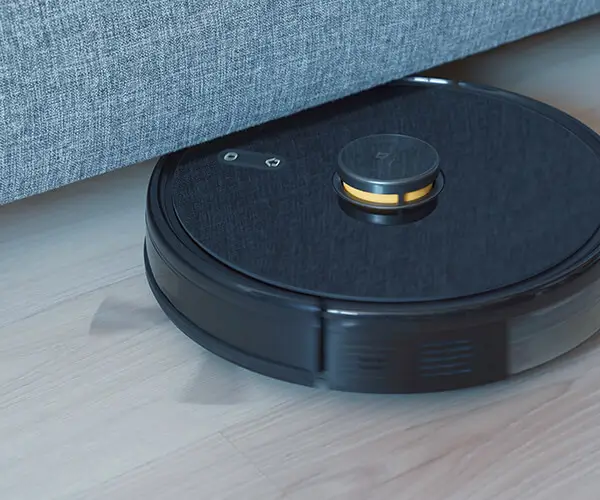Unlocking the Power of Allen Bradley Servo Motors: An Essential Guide
In the realm of industrial automation, Allen Bradley servo motors stand out as a cornerstone of precision, efficiency, and reliability. Whether you're operating in manufacturing plants, robotics, or high-performance machinery, these motors deliver the crisp movements and seamless control vital to modern industry. Yet, like all sophisticated devices, they aren't immune to wear and tear over time. When issues arise—be it inconsistent performance, unusual noises, or outright failures—knowing how to approach repair becomes invaluable.

This guide aims to demystify the process of Allen Bradley servo motor repair, offering insights for technicians, engineers, and enthusiasts alike. From understanding the core components and common failure points to troubleshooting techniques and repair best practices, you'll find it all here.
Understanding the Anatomy of an Allen Bradley Servo Motor
Before diving into repair strategies, it’s crucial to understand what makes these motors tick. Allen Bradley servo motors typically consist of several key elements:
Rotor and Stator: The core components that produce rotation through electromagnetic interactions. Encoder: Provides feedback on the position and speed of the rotor, enabling precise control. Bearings: Support the rotor’s movement and mitigate friction. Windings and Phases: Generate magnetic fields necessary for motor operation. Drive Electronics: Connected to the motor, they regulate power supply according to control signals.
This complex architecture means issues can stem from various sources, ranging from electrical faults to mechanical wear. Recognizing the symptoms early and understanding the internal setup can significantly streamline diagnosis and repair.
Common Causes of Allen Bradley Servo Motor Failures
Servo motors are highly engineered devices designed for durability, yet their environment and usage conditions often dictate their lifespan. Here are some prevalent issues that necessitate repair:
Overheating: Excess heat damages windings and insulations, often caused by overvoltage or poor cooling. Mechanical Wear: Bearings and brushes (if present) experience wear over time, leading to noise or vibrations. Electrical Faults: Short circuits, open windings, or failed connectors can impair functioning. Encoder Failures: Faulty feedback devices cause loss of position accuracy. Contamination: Dust, debris, or moisture infiltrating the motor reduces performance and accelerates wear.
Recognizing these issues early can prevent costly downtime and extend the servo motor's operational life.
Diagnostic Techniques and Troubleshooting
When facing a suspected problem with your Allen Bradley servo motor, systematic troubleshooting is your best bet. Here’s a step-by-step approach:
Visual Inspection: Check for signs of physical damage—cracks, burns, rust, or leaks. Inspect wiring and connectors for corrosion, loose connections, or breaks. Listen and Feel: Unusual noises or vibrations can indicate bearing issues or misalignments. Excessive heat may point to electrical or mechanical stress. Electrical Testing: Use a multimeter to test windings for continuity. Measure insulation resistance to identify insulation breakdown. Confirm encoder output signals are accurate and consistent. Drive Signal Checks: Ensure the servo drive is delivering proper voltage and current. Look for fault codes or error messages in the drive controller. Mechanical Evaluation: Rotate the rotor by hand (if accessible)—smooth rotation suggests mechanical integrity. Assess bearing condition manually or visually.
Repair Essentials: From Replacement to Reconditioning
Depending on the severity and nature of the fault, repair strategies may vary:
Replacing Windings or Encoders: For electrical faults, exchanging defective parts is often straightforward, provided you source compatible Allen Bradley components. Bearing Replacement: Mechanical repairs involve disassembling the motor, removing worn bearings, and installing new ones with proper lubrication. Cleaning and Reassembly: Removing dust and insulating contaminants can sometimes restore partial performance, especially if the damage isn't extensive. Electrical Rewinding: For severely damaged windings, professional rewinding can breathe new life into your motor, often restoring it to factory specifications.
When to Consider Professional Repair Services
While some maintenance tasks are manageable for skilled technicians, others demand specialized tools and expertise. Professional service centers equipped for Allen Bradley servo motor repair can perform advanced diagnostics, precision rewinding, and calibration, ensuring your motor performs as intended. They also stock genuine parts and follow industry best practices for safety and quality.
In the next segment, we’ll explore advanced repair methods, preventive maintenance strategies, and how to choose the right service provider to keep your Allen Bradley servo motors running at peak performance.
Kpower has delivered professional drive system solutions to over 500 enterprise clients globally with products covering various fields such as Smart Home Systems, Automatic Electronics, Robotics, Precision Agriculture, Drones, and Industrial Automation.




































